One of the plants that can be easily grown from seed is Petunias. Starting Petunias from seed is easy, and the rewards are plentiful. These flowers will add color to your garden all summer long and are reasonably hardy, making them an excellent choice for beginner gardeners. You can choose from various colors and sizes when growing Petunias from seed, so there’s sure to be a perfect addition to your garden.
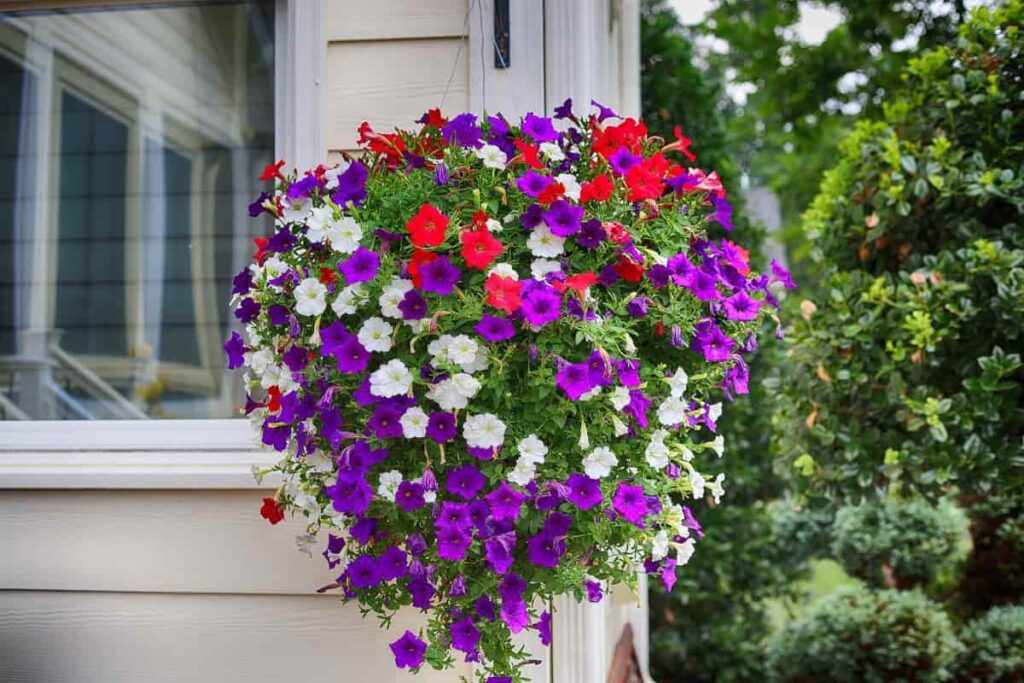
How to grow Petunias from seed
How much time does it take for Petunias to flower from seed?
- Petunias flower from seed in around 50 to 60 days, but you’ll need to give them plenty of water and sunlight. Start by planting the Petunia seeds in a well-drained soil mix. Water them well and fertilize them with compost or bone meal twice a year. You can thin out the others if your Petunia plants grow quickly. When the flowers start to form, you can begin harvesting the Petunia blooms.
- Petunias are fun flowers to grow; flowers grown from seed can add excitement to your planting schedule. Petunias’ average growth time from seed to maturity is 55 days. Once the plants have reached maturity, they will produce flowers for around eight weeks.
Removing seeds from Petunias
To remove seed pods from Petunias, identify the type of pod. There are two types of pods in Petunias: tap and spur. Tap pods have long, thin seeds that hang off the pod like a stylus. Spur pods have short, fat seeds that are located near the stem. Break the pod open with your thumb to remove a tap pod. Then use your fingers to pull out the seeds one at a time.
Water requirement for growing Petunias
- It is essential to water Petunia seeds often for them to grow and produce flowers. Water Petunia seeds every day, but it is best to check the soil moisture level first to ensure it is sufficiently moist. Petunias are cool-season flowers that can grow in various soil types and climates. They need average water allotment during the growing season but don’t require supplemental irrigation once they reach maturity.
- Typically, Petunias require about 1/2 gallon of water per plant each week during the growing season. However, thirsty plants in warm weather may need up to 3 gallons per week. Ensure a steady water supply, especially during the early stages of growth when your Petunia plants are most susceptible to root damage. Overwatering will cause your plants to become spindly and weak, while underwatering can stunt their growth and cause them to produce fewer flowers. When watering your Petunias, make sure the soil is moist but not wet.
In case you missed it: 25 Flowers for Container Gardening: Top Best List and Easy for Beginners
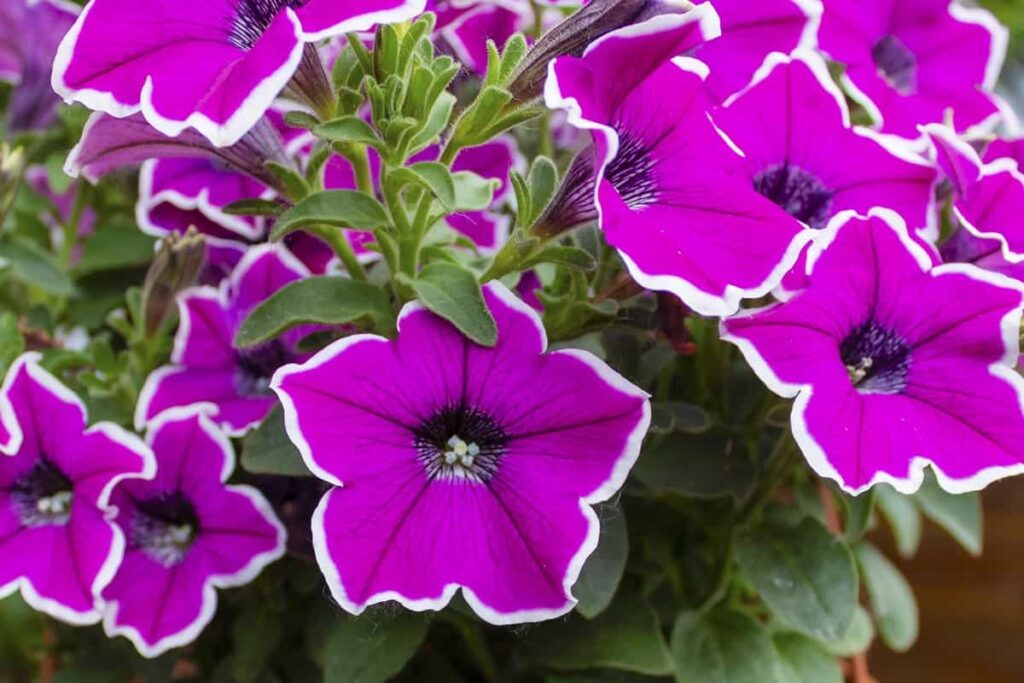
Deadheading Petunias
Petunias are a popular annual flower that can be grown from seed. Petunias will send up a stem with leaves at the base when planted. The leaves will grow and turn green, then change color at the end of their growth cycle. At this point, the Petunia will flower, and the flowers will die off. You should remove the dead blooms from Petunias before harvest to prolong the life of your plants. Dead blooms can easily be removed by hand, using a sharp knife or scissors.
Sun requirement for growing Petunias
Whether to grow Petunias in the sun or shade is ultimately up to the gardener. Some Petunias prefer full sun, while others do well in partial shade. However, it is essential to be consistent with your gardening habits when growing Petunias to get accurate results. You will need at least six hours of direct sunlight daily to grow Petunias from seed. However, you will also want to place the pot in a location that gets at least six hours of bright sunlight throughout the day.
Why are the leaves on my Petunias turning yellow?
Leaves on Petunias may turn yellow and fall off the plant prematurely if the plant is experiencing nutrient deficiencies. It may be caused by a lack of nitrogen, potassium, or both. To prevent this issue, ensure to fertilize your Petunias with a balanced fertilizer every time you water them. Additionally, check the pH level of your soil and adjust it if necessary. Finally, make sure that your plants are getting adequate sunlight and water.
The best fertilizer for growing Petunias
- Many different types of fertilizer can be used to grow Petunias. The best fertilizer for Petunias will depend on the type of soil the plants are growing in, the plant’s growth stage, and the amount of sunlight that the plants receive.
- An excellent organic fertilizer for Petunias comprises compost, worm castings, and other organic matter. This fertilizer is beneficial because it helps improve the soil’s structure and aeration. Chemical fertilizers are also available as powders or liquids and can be used on many plants, including Petunias. These fertilizers provide quick results and help to increase plant growth rates. However, chemical fertilizers can also be harmful if not used correctly, so read the labels before using them.
- If you grow Petunias in containers, a general-purpose fertilizer such as 10-10-10 or 12-12-12 will work fine. For garden plants, though, there are specific fertilizers designed specifically for Petunia growth, such as 10-10-10 or 14-14-14.
In case you missed it: Top 10 All Year Flowering Plants
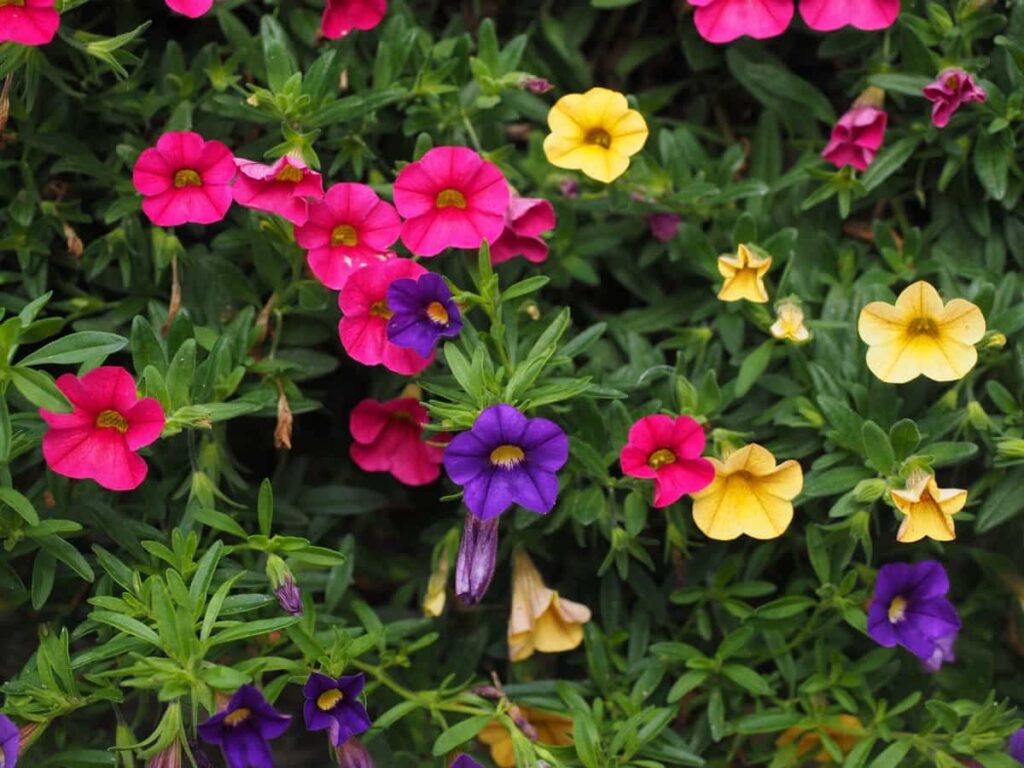
How far apart do you plant Petunia seeds?
To plant Petunia seeds, select a sunny location with well-drained soil and germinate them by soaking them overnight. Once germination has occurred, plant the Petunias seeds 1/4 inch deep and 1 inch apart in rows 3 to 6 inches apart. Water regularly and fertilize as needed to achieve vigorous growth. Harvest Petunias when they are in bloom, usually between May and July.
Petunias care in winter
- If you live in a cold-winter climate, you may wonder if Petunia seeds can survive the winter. The short answer is that most Petunia varieties will survive through winter if appropriately treated. Make sure your plant doesn’t freeze, as that will kill it.
- Grow Petunias in containers that can be moved outside if necessary. Harden off your plants before the winter by gradually reducing the water and fertilizer given to them. This will make them more resistant to cold weather damage. Mulch your plants to conserve moisture and keep them warm. Protect your Petunias from severe frost by covering them with a layer of straw, leaves, or newspapers.
The best soil for growing Petunias
- Petunias are a favorite flower of many gardeners. They enjoy both full sun and shaded soils but will also grow in soil that is heavy or clayey. You can start Petunias from seed in any soil, but they will perform best in well-drained soil.
- A well-drained, fertile soil is essential for healthy plants that will produce bountiful harvests. Petunias are no exception and require soil with plenty of organic matter to thrive. A mix of loam, peat moss, and compost is ideal. Be sure to water well and add a balanced fertilizer every few weeks during active growth. Start your seeds in pots before transplanting them into the garden later for best results.
Why aren’t my Petunias germinating?
- The most common reason is that the seeds need to be fresh. Make sure to store your Petunias properly, in a cool and dark place, for at least two months after you purchase them. If the seeds are still fresh when you plant them, they will germinate more quickly.
- Another common problem is that the soil is too dry. Add plenty of compost or organic matter to the planting area before adding the seedlings. Finally, some plants never germinate even when they’re fresh and have been stored properly.
In case you missed it: How to Create a Beautiful Flower Garden in the Balcony
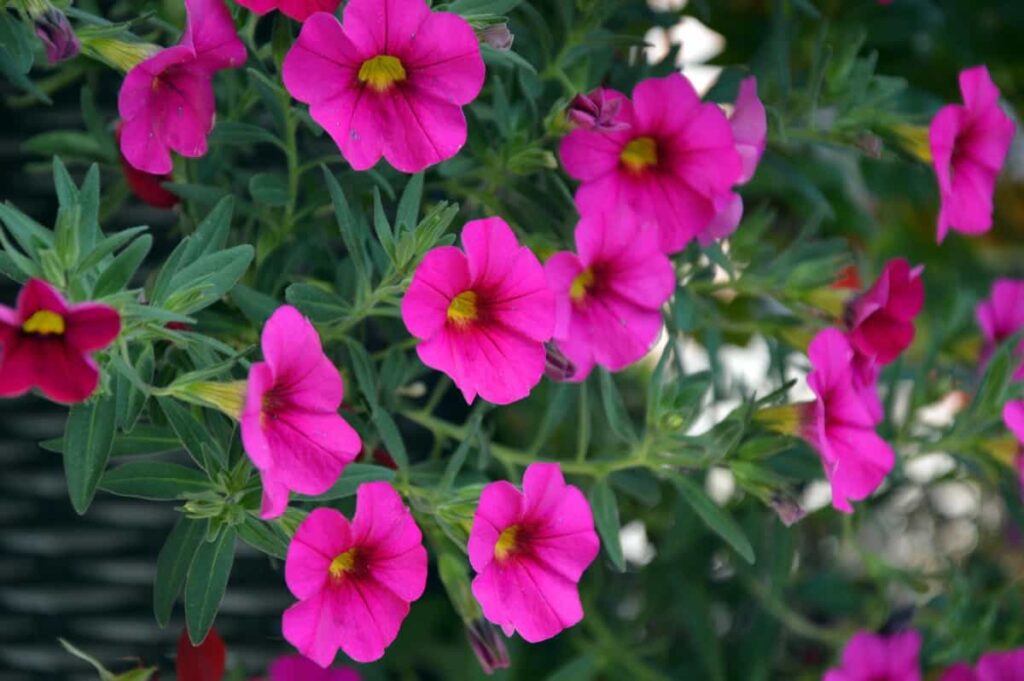
Growing Petunias from cuttings
Cutting Petunias from the garden is a great way to start growing more plants. When you take cuttings, make sure to clean them well beforehand. Before taking them outside, you can water them and slip them into a rooting medium. Make sure the temperature is about 16°C for at least eight hours. Once they root, transfer them to the soil and wait for new growth.
Why are my Petunias growing but not blooming?
- The first reason is that Petunias need a certain amount of light to do well. If your garden is too dark, your Petunias won’t produce pollen, and they won’t be able to fertilize their flowers. This means that you’ll likely have to supplement the light your plants get with artificial light or sunlight if you want them to flower.
- Another reason Petunias might not bloom is that they don’t like being overwatered. Over-watering can deprive plants of vital nutrients, leading to wilting and poor growth. You should water your plants only when the soil feels dry and evenly distribute the water throughout the pot.
Pruning Petunias
- Petunias are a hardy annual that can withstand some pruning, but you’ll want to trim them back every three to four weeks to keep them healthy and vigorous. You can also deadhead Petunias in the fall, but only as necessary since this will affect their blooming.
- Start by removing any dead or diseased foliage. This includes both green leaves and flower stalks. Damaged foliage can result in less light reaching the flowers, which will cause them to go dormant early in the season.
Best time to plant Petunia seeds
- You can plant Petunias in early spring or late fall, depending on your climate. Early spring is preferable in areas that experience cold winters, while late fall is better in warmer temperatures. Both times of the year offer an excellent opportunity for consistent growth.
- The best time to start Petunia seeds indoors is early to mid-March. This is when the soil is still warm but not too hot, and there is enough daylight for the seeds to germinate. Once the seeds have germinated, water them regularly and fertilize them once a month with a balanced fertilizer. Petunia plants will flower in late summer or early fall.
In case you missed it: 16 Fragrant Spring-flowering Shrubs: How to Grow, Planting, and Care
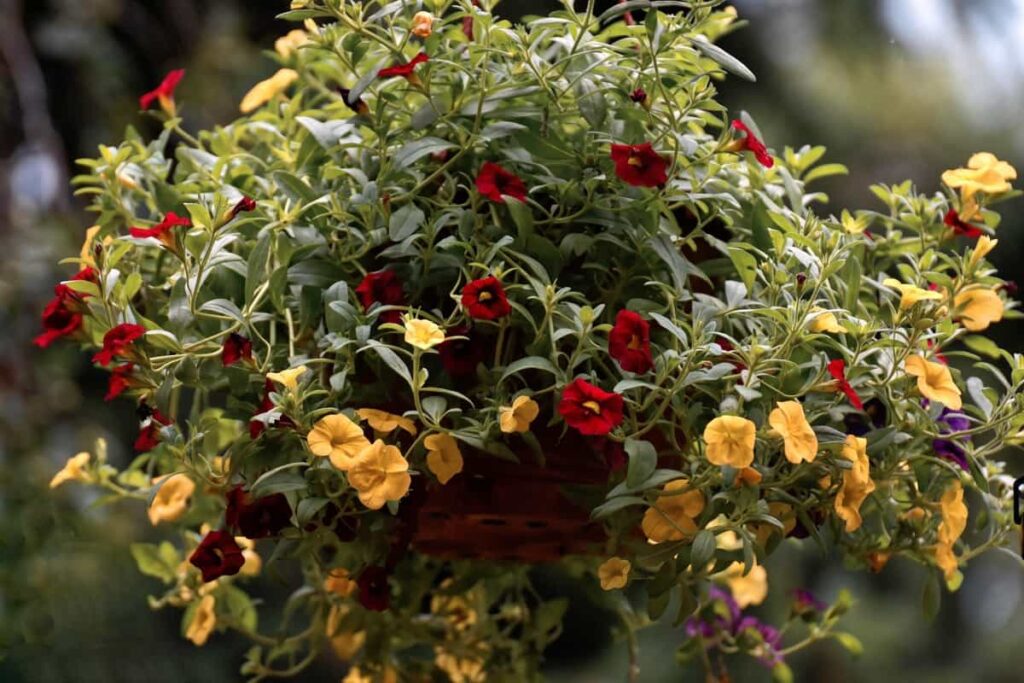
Growing Petunias in pots
Petunias are an excellent choice for gardeners who love bright flowers in containers. This easy-to-grow flower does well in pots and makes a beautiful addition to any garden. Growing Petunias in pots is a great way to start with this popular flower. Petunias need full sun and well-drained soil but are also tolerant of less-than-perfect conditions.
If you plan to grow Petunias in pots, start with seeds. Make sure the soil is well moistened before planting the seeds, then water regularly during the early growing stages. Once the plants are established, reduce watering to once a week or less. Be sure to deadhead (trim off spent flowers) to promote new growth and prolong flowering.
What causes Petunias to become leggy?
Petunias are cool-season annual flowers that will bloom during the summer months. They generally grow best in full sunlight but can tolerate partial shade. Petunias are best grown from seed and should be started indoors four to six weeks before the desired planting date outside. Once planted, Petunias should be kept well-watered and fertilized.
Germinating Petunia seeds indoors
- To start with, you’ll need to purchase some Petunia seeds. Petunias come in various colors and flavors, so choose the right ones for your garden. To do this, you’ll need to soak your seeds in water overnight. The next day, simply rinse them off and place them in a container with fresh soil. Make sure to give your Petunias plenty of light and water throughout the germination process.
- After about two weeks, you’ll see your Petunia’s first signs of growth. Keep up the good work by watering regularly and providing plenty of light. When the seedlings have grown about six inches tall, it’s time to transplant them into larger pots or plants. Once they’re planted, give them another week or two of good care before harvesting their flowers.
In case you missed it: Cool-season Plants for Pollinators: Vegetables, Flowers, Fruits, Shrubs, and Herbs
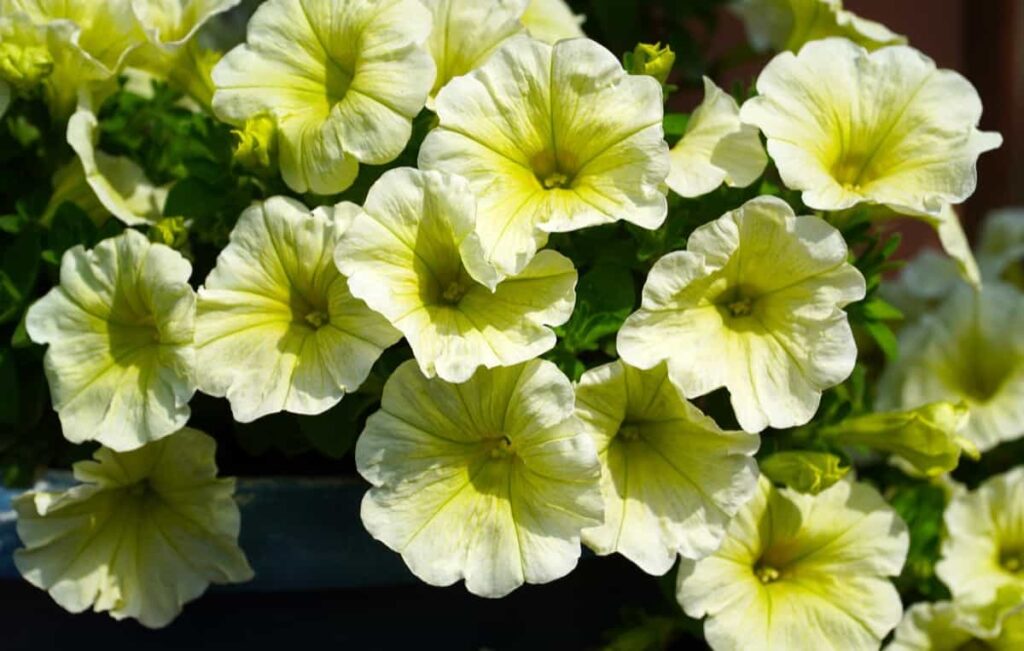
Conclusion
Petunias are the most popular garden plants and for a good reason. They’re easy to grow from seed and make a beautiful addition to any garden. If you’re looking to grow Petunias from seed, there are a few things that you need to know. You’ll need to ensure that you have the right kind of soil that is well-drained and has plenty of nutrients.
Give the plants plenty of water and sunlight. Regular watering will help keep them healthy and happy. If you follow these tips, your Petunia plants should soon be blooming. In the end, patience and effort will result in beautiful flowers you can enjoy throughout the summer.
- Flower Garden Designs and Layouts for Beginners
- Planting and Spacing Techniques in Papaya: A Beginner’s Guide
- Growing Gold: Essential Techniques for Planting Pineapples
- How to Make Kalanchoe Plant Bushy: Home Remedies and Solutions
- 11 Reasons Why Your Gardenia is Not Blooming: Home Remedies and Solutions
- Eco Elegance: The Guide to Designing a Drought-Tolerant Landscape
- Gardening on a Slope: Strategies for Hillside Landscaping
- Nourish and Flourish: Top Organic Mulches for Thriving House Plants
- Everything You Want to Know about Indian Mogra Flower: Discover Uses and Growing
- Green Thumb Success: Expert Tips for Cultivating Greenhouse Pumpkins All Year Round
- Maximize Growth & Flavor: The Ultimate Guide to Companion Planting in Herb Gardens
- How to Control Rhododendron Problems Naturally: Home Remedies and Organic Ways to Fix Them
- Natural Magic: The Remarkable Benefits of Cinnamon for Plants
- Best Steps to Revive Dying Tulip with Natural and Organic Treatment
- 10 Reasons Why Your Angel Trumpet is Not Blooming: Remedies and Treatment
- How to Fix Periwinkle Leaf and Flower-Related Problems: Natural Remedies and Solutions
- How to Fix Zinnias Leaf and Flower Problems: Discover Natural and Home Remedies
- Organic Steps to Induce Lemon Tree Flowers: A Comprehensive Guide
- Bloom Booster: Crafting the Perfect Homemade Bougainvillea Fertilizer
- Optimizing Growth: A Guide to Applying NPK Fertilizer for Potted Plants
- 10 Best Homemade Fertilizers for Rubber Plant: DIY Recipes and Application Method
- How to Boost Female Pumpkin Flowers: Effective Steps for More Flowers and High Yields
- Transform Your Indoor Garden: Top Benefits of Pink Salt for Houseplants
- 10 Best Homemade Fertilizers for Peacock Plants (Calathea): Easy DIY Guide
- Unlock Blooms: 9 Reasons Why Your Potted Chrysanthemum is Not Blooming
- 8 Reasons Why Your Potted Hibiscus is Not Blooming: Fix it with Simple Solutions
- Unlock Blooms: 9 Key Reasons Your Potted Frangipani Won’t Flower
- 10 Reasons Why Is My Ice Plant Not Blooming: Remedies and Treatment
- 10 Reasons Why My Potted Hydrangea Not Blooming: Treatment and Remedies
- 10 Reasons Why is My Wisteria Not Blooming: Remedies and Treatment
- 10 Reasons Why is My Goldfish Plant Not Blooming: Remedies and Treatment
- Maximize Your Space: Ultimate Guide to Balcony Gardening with Grow Bags
- 10 Reasons Why Your Iris is Not Blooming: Remedies and Treatment
- 10 Reasons Why Your Anthurium Plant is Not Blooming: Treatment and Remedies
- 10 Reasons Why Your Aquaponic Plants Are Not Flowering: Remedies and Treatment
- 10 Reasons Why Your Agapanthus is Not Flowering: Remedies and Treatment